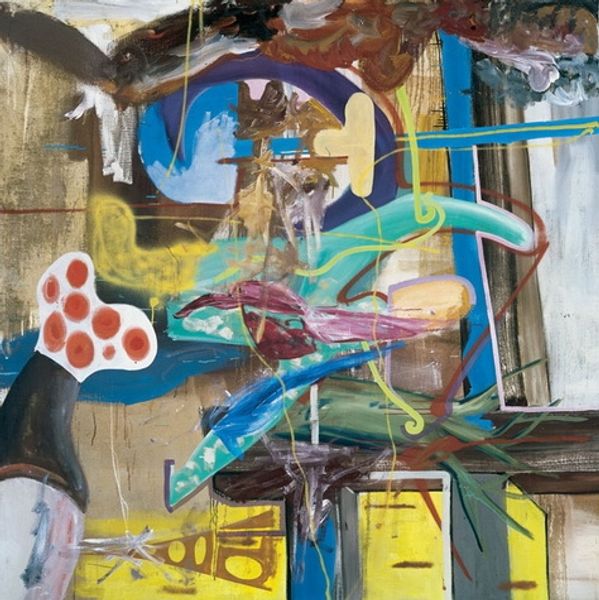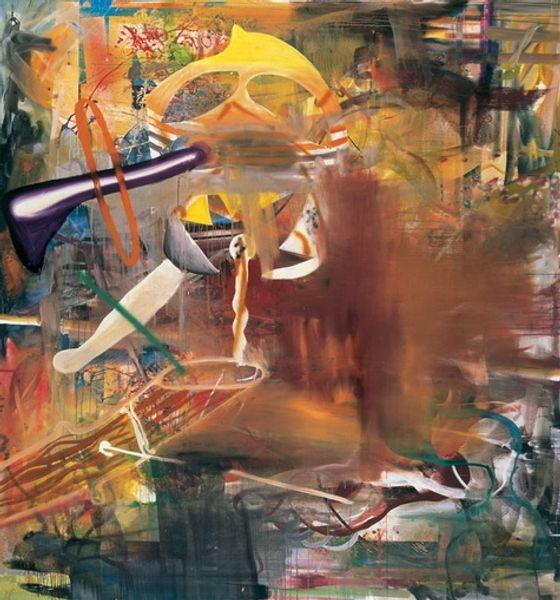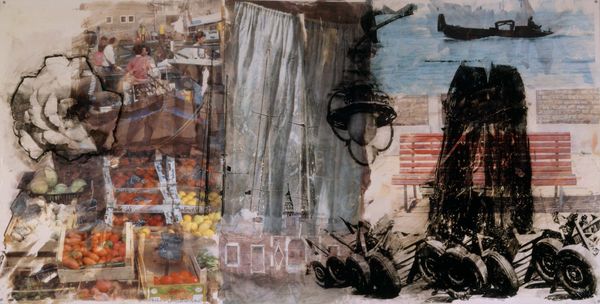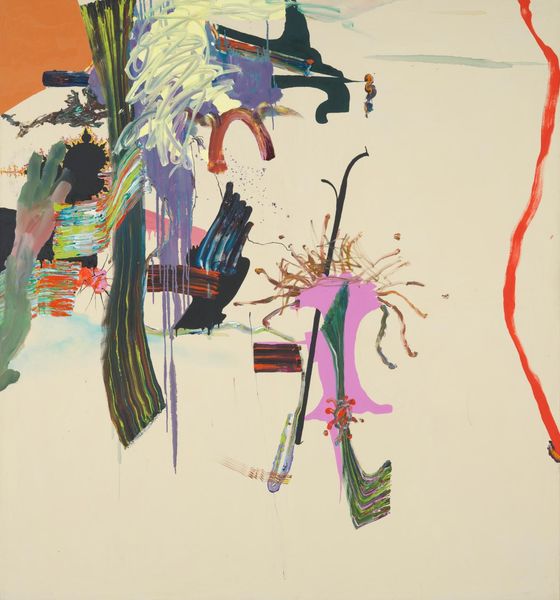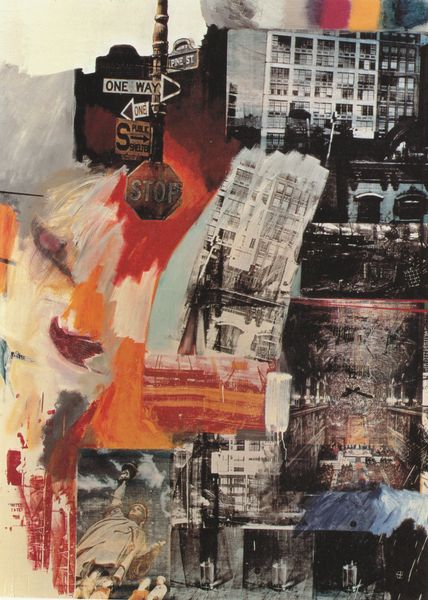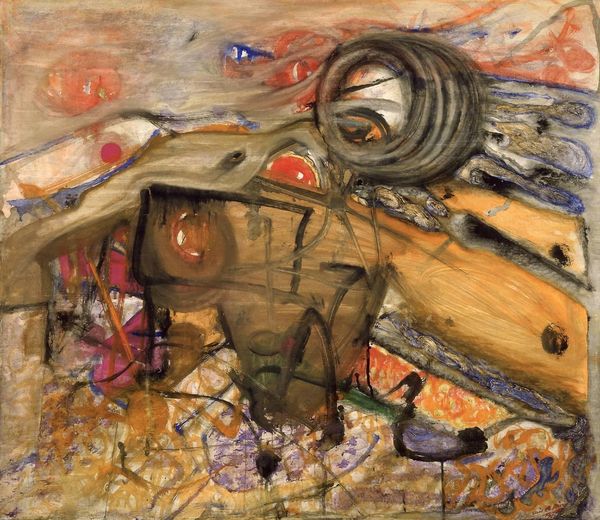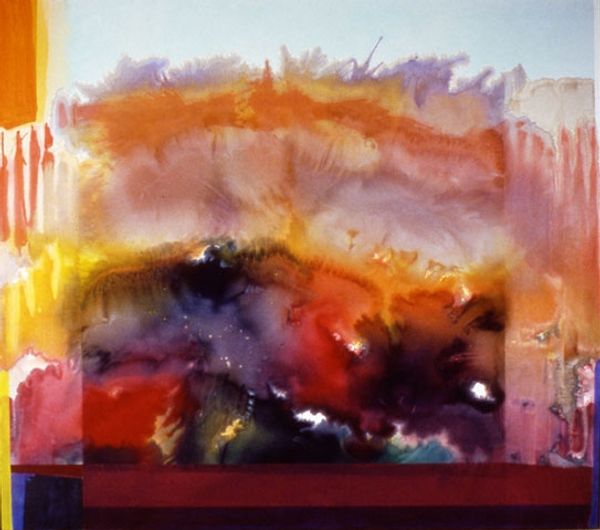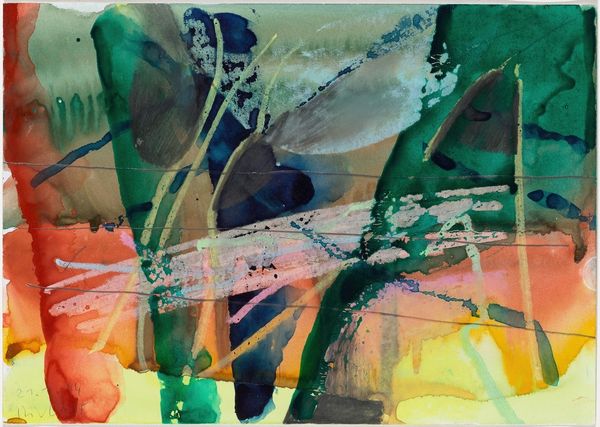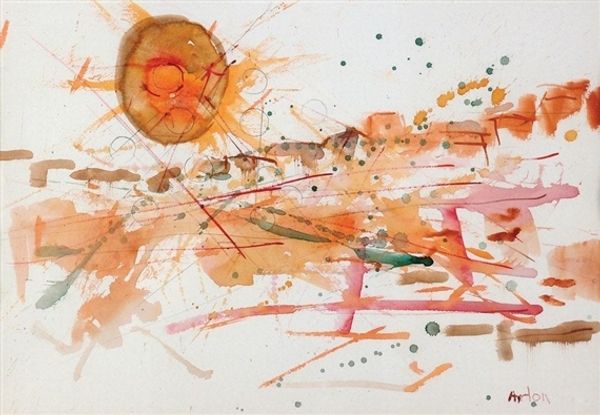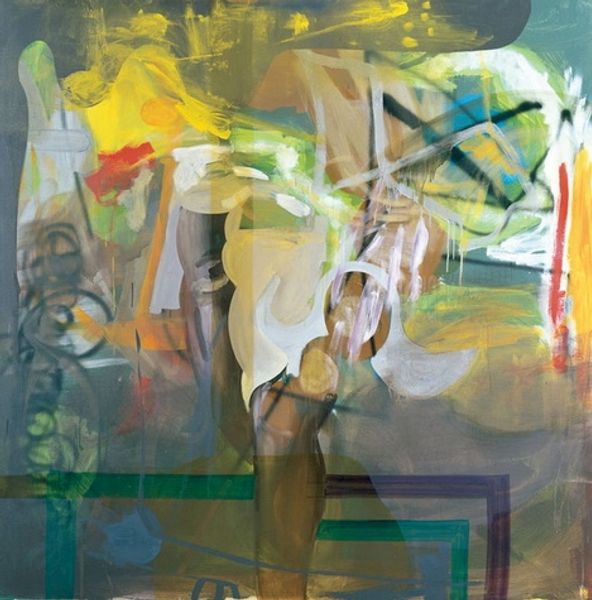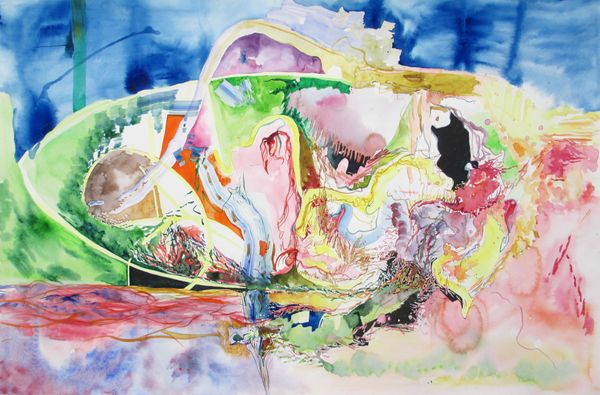
oil-paint, gestural-painting
#
oil-paint
#
oil painting
#
gestural-painting
#
neo expressionist
#
neo-expressionism
#
abstraction
#
modernism
Copyright: Albert Oehlen,Fair Use
Editor: Albert Oehlen's "Mirage of Steel," from 2003, uses oil paint in such a gestural way. There's an overwhelming mechanical feel, despite being an abstract piece. It's almost chaotic but has structure; how do you interpret this work? Curator: Given its date, I immediately think about the social and political landscape of the early 2000s. The post-9/11 world was steeped in anxiety about industrialization and globalization. Knowing Oehlen was associated with Neo-Expressionism makes me see this not just as abstract but as a potential commentary on the fears of the modern, mechanized world and even surveillance. Do you see elements that might suggest that? Editor: I do see how the disjointed shapes can be menacing! It also reminds me that Neo-Expressionism rejected the cool, detached nature of minimalism. So Oehlen’s emotional chaos actually becomes his statement. It makes you wonder if Oehlen uses abstraction to disorient and question society's obsession with industry, making us stop to think if the modern world’s promise is a 'mirage’. Curator: Precisely. By using abstraction, the art and artist are less susceptible to scrutiny, and the work remains elusive. Perhaps it functions as social critique under the veil of personal expression, a crucial distinction in how we consider the power dynamics within the art world itself. Is that fair? Editor: I didn’t consider the art world politics and think I will start researching this more. I am seeing this painting from a very different point of view now! Curator: Yes, exactly! The artist also functions as a public actor, as we all do, and to consider the art this way illuminates it further.
Comments
No comments
Be the first to comment and join the conversation on the ultimate creative platform.
